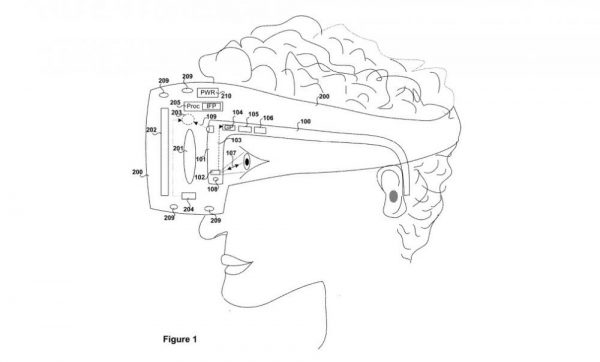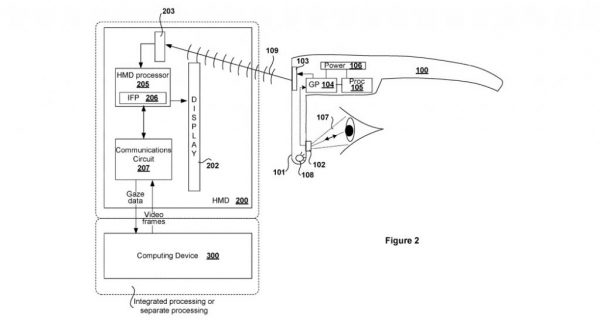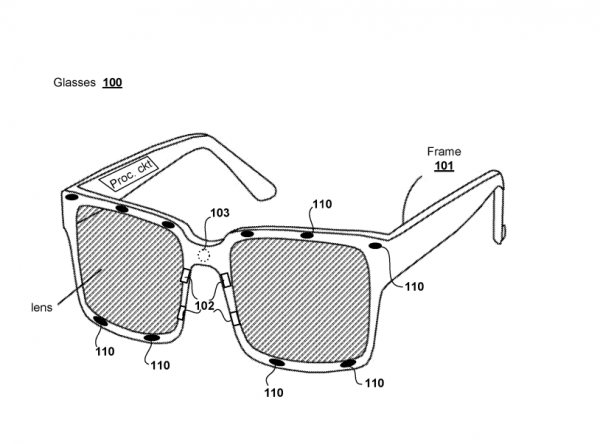Sony Patents VR-Friendly Prescription Glasses Equipped with Eye-Tracking
One of the many obstacles to mass adoption of virtual reality is the problems faced by glass-wearers when putting on the virtual reality headsets. Although some headsets accommodate this better than others, you will generally not be able to wear your prescription glasses with your VR headset which is a huge handicap given the sheer size of the global population that relies on prescription glasses.
Some users rely on the built-in lenses in the headsets that can handle the focus issues for you when you are shortsighted. The VR screen is also just a few centimeters away from your eyes which should not pose a vision problem. Many virtual reality headset designs also feature adjustments that can be used to center the lenses on your eyes and some form of limited focal point adjustments. If you are not acutely shortsighted or longsighted, you are unlikely to be hampered by your vision impairment. However, there are people who simply cannot do without prescription glasses and will need these even for a VR experience and they are currently not catered for by the major designs.

Sony has patented the design for new prescription glasses which aim to address the difficulties faced by glass-wearers when using virtual reality headsets.
Sony’s patent shows prescription VR glasses that will have eye tracking sensors as a defining feature and which will be used with virtual reality headsets such as the PlayStation VR. The VR headsets that will be worn with these prescription glasses will be capable of detecting via an “encoded signal” that the user is wearing these glasses and in response disable the headset’s “gaze detection function”.
The gaze data is wirelessly sent to the headset via the eye-tracking sensors in the prescription glasses. The image frame processor subsequently adjusts the image frames of the headset’s display as a response.
The Sony patent was published last week and showcases prescription glasses that will fit inside a virtual reality headset. Some of the major VR headset brands do not support glasses and Sony hopes that its invention will help rope in more virtual reality enthusiasts to its PSVR headset or its yet to be announced PSVR 2.

The inclusion of eye-tracking sensors in the prescription glasses will also make for very interesting functionality. According to the patent information, the sensors will be capable of detecting the user’s gaze information so as to improve the quality of the content that will be provided for rendering on the HMD or VR headset.
Based on this description, the eye-tracking sensors in the prescription glasses shown in the Sony patent could have foveated rendering whereby a headset is capable of tracking the position of the user’s eyes and then fully rendering the area of the screen in the center of the user’s vision. The rest of the image will not be fully rendered but the user’s peripheral vision will be incapable of detecting this. This kind of function will help cut down on the processing power that is required of the machine that will be running the virtual reality experience.
There are several reasons why Sony would have included the eye-tracking sensors in the prescription glasses rather than limiting them to the headset itself. One of the more likely is that the prescription glasses were designed specifically for use with the Sony PSVR which does not feature an eye-tracking functionality. While the PSVR offers users great virtual reality experiences, the PS4 that powers it is nothing compared to the robust computational power and graphics provided by the PCs that power the HTC Vive and Oculus Rift headsets. By implementing the foveated rendering in a PSVR-prescription glasses setup, Sony might hope to give its PSVR an upgrade in performance.

On the other hand, the next-generation PSVR headset will have eye-tracking functionality embedded in the headset design in which case foveated rendering will be redundant. Without much detail on this, it might be hard to pinpoint Sony’s rationale for including eye-tracking sensors in its prescription glasses or why Sony would build glasses that are specifically designed for use with its headsets when many hardware vendors are currently striving towards making devices that are more platform-invariant and more accessible to the masses.
Sony has been rolling out an avalanche of patents in 2019 and this is just its latest. In March 2019, it was reported that Sony had filed a patent for a wireless PSVR version and in February, new features for Sony’s long-running controller patent which might replace its PlayStation Move were spotted. There is also a great package of PSVR games that will be released this year.
https://virtualrealitytimes.com/2019/04/09/sony-patents-vr-friendly-prescription-glasses-equipped-with-eye-tracking/https://virtualrealitytimes.com/wp-content/uploads/2019/04/Sony-Prescription-VR-Glasses-600x444.pnghttps://virtualrealitytimes.com/wp-content/uploads/2019/04/Sony-Prescription-VR-Glasses-150x90.pngInventionsOne of the many obstacles to mass adoption of virtual reality is the problems faced by glass-wearers when putting on the virtual reality headsets. Although some headsets accommodate this better than others, you will generally not be able to wear your prescription glasses with your VR headset which is...Sam OchanjiSam Ochanji[email protected]SubscriberVirtual Reality Times - Metaverse & VR
